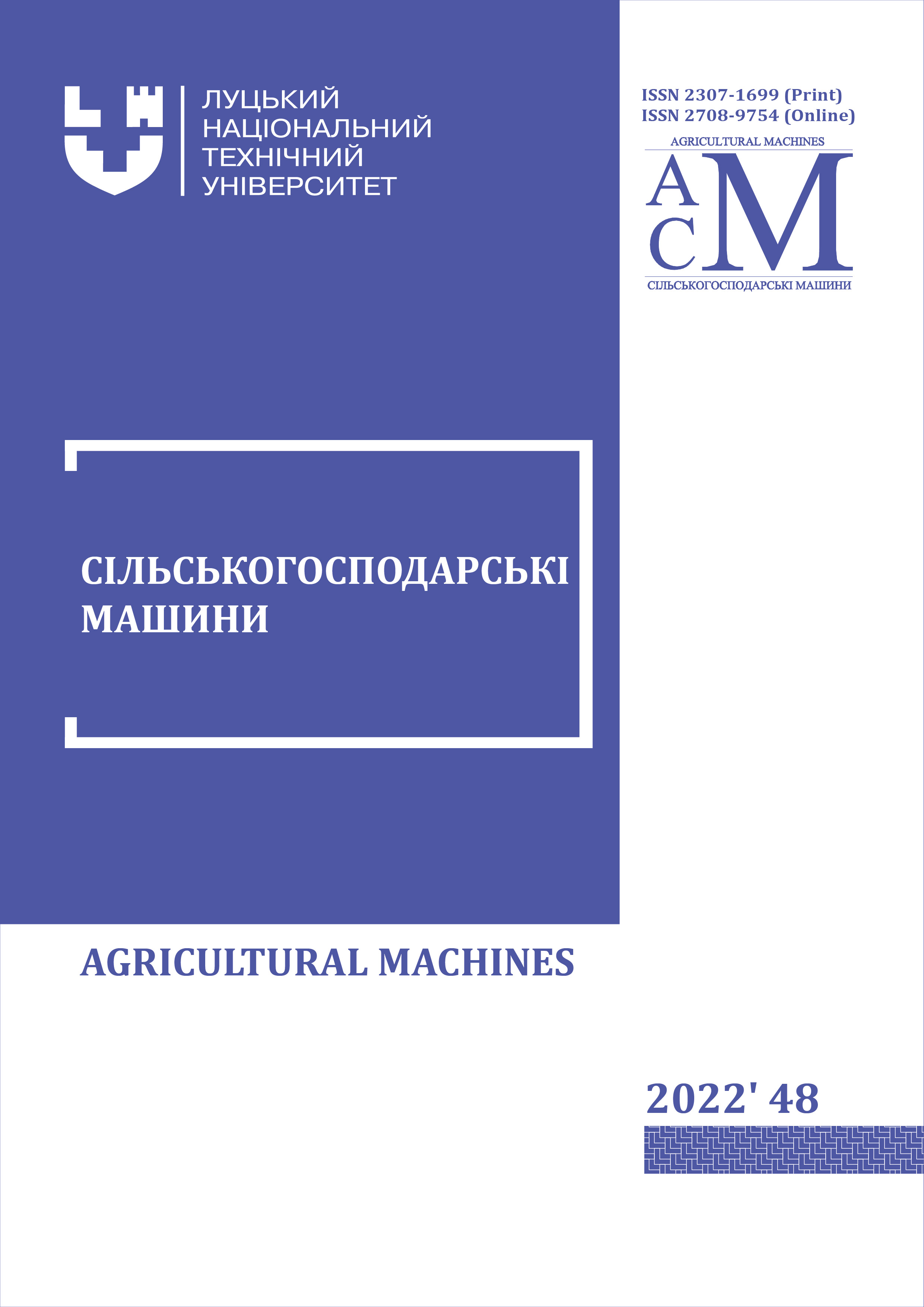REASONING OF PARAMETERS OF LOADING AND DISTRIBUTION EQUIPMENT FOR COMBINED FEED
Abstract
The economic efficiency and intensive development of the livestock and poultry industries largely depends on the rational organization of fodder production. High-quality fodders contribute to the increase of the livestock population, increasing its productivity, improving the quality of products, and reducing its cost price. The processes of feeding animals and poultry are greatly simplified due to the use of compound feed. The advantages of compound feed are determined by the same size, mass, shape and composition of granules. All feed for animals and birds is balanced due to the fact that they do not have the opportunity to choose tastier ingredients. Such feed is easier to transport and store. Also, the increase in the use of compound feed is explained by the relatively low price, which helps to reduce the cost of livestock products. In the process of storing compound feed in bunkers, negative phenomena such as segregation, agglomeration, and the formation of lumps are often manifested. So, a change in the structure of the material is manifested. The probability of occurrence of such phenomena increases if the loading equipment is used, which does not ensure the uniformity of the distribution of feed pellets in the storage container. If the manifestation of these negative phenomena is neglected, it will lead to the deterioration of the physiological condition of animals, and as a result to a decrease in the company’s profits. On the other hand, such phenomena lead to the irrational use of bunkers for storing fodder. The design of loading and distribution equipment for compound feed is proposed in the article. The equipment is designed to solve the following tasks: eliminating segregation; increasing the productivity of the process of loading compound feed into the bunker; ensuring uniform distribution of compound feed over the volume of the container. The set tasks are solved due to sequentially installed blades and a cone-shaped fairing. A theoretical analysis of the process of interaction of granules with the design element of the equipment (fairing bars) was performed. The equations that make it possible to determine the angle of inclination of the bars to the horizon and their length are obtained.
References
Hill, R. F. (2012). Feed efficiency in the beef industry, Idaho, Wiley-Blackwell.
Варламов, А. В. (1999). Повышение эффективности процесса выпуска компонентов комбикорма бункером с донным щелевым отверстием и механическим сводообрушителем (Increasing the efficiency of the process of releasing compound feed components by a bunker with a bottom slotted hole and a mechanical breaker) [Диссертация кандидата технических наук]. Самарский институт инженеров железнодорожного транспорта, Саратов.
Варламов, А. В. (2010). Конструкция и динамика механизмов предотвращения и устранения сводообразований в бункерах хранения и выпуска сыпучих материалов (The design and dynamics of mechanisms for preventing and eliminating arching in silos for storage and release of bulk materials). Самара, Самарский научный центр Российской академии наук.
Горюшинский, И. В., & Мосина, Н. Н. (2001). К вопросу оценки процесса загрузки емкостей сыпучими материалами (On the issue of assessing the process of loading containers with bulk materials). Сборник научных трудов студентов, аспирантов и молодых ученых СамИИТ, 3, 83-84.
Грабчук, І. Ф. (2010). Інноваційний розвиток кормовиробництва (Innovative development of fodder production). Житомирський національний агроекологічний університет, Житомир.
Демидась, Г. І., & Слюсар, І. Т. (2019). Нетрадиційні кормові культури (Non-traditional fodder crops). Київ: НУБіП України.
Державна служба статистики України. (2021). Статистична інформація. Retrieved June 30, 2022, from https://www.ukrstat.gov.ua/
Зінченко, О. І. (2005). Кормовиробництво (Fodder production). Київ: Вища освіта.
Палкін, Г. (2001). Сучасні технології годівлі корів (Modern technologies of feeding cows). Пропозиція, 11, 78-79.











